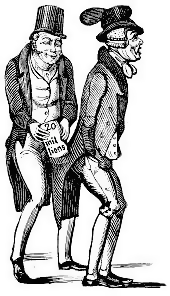Wages of sin: slavery and the banks, 1830-50
by Aaron Graham (University College London)

In 1834, the British Empire emancipated its slaves. This should have quickly triggered a major shift away from plantation labour and towards a free society where ex-slaves would bargain for better wages and force the planters to adopt new business models or go under. But the planters and plantation system survived, even if slavery did not. What went wrong?
This research follows the £20 million paid in compensation by the British government in 1834 (equivalent to about £20 billion today). This money was paid not to the slaves, but to the former slave-owners for the loss of their human property.
Thanks to the Legacies of British Slave-ownership project at University College London, we now know who received the money and how much. But until this study, we knew very little about how the former slave-owners used this money, or what effect this had on colonial societies in the West Indies or South Africa as they confronted the demands of this new world.
The study suggests why so little changed. It shows that slave-owners in places such as Jamaica, Guyana, South Africa and Mauritius used the money they received not just to pay off their debts, but also to set up new banks, which created credit by issuing bank notes and then supplied the planters with cash and credit.
Planters used the credit to improve their plantations and the cash to pay wages to their new free labourers, who therefore lacked the power to bargain for better conditions. Able to accommodate the social and economic pressures that would otherwise have forced them to reassess their business models and find new approaches that did not rely on the unremitting exploitation of black labour, planters could therefore resist the demands for broader economic and social change.
Tracking the ebb and flow of money shows that in Jamaica, for example, in 1836 about 200 planters chose to subscribe half the £450,000 they had received in compensation in the new Bank of Jamaica. By 1839, the bank had issued almost £300,000 in notes, enabling planters across the island to meet their workers’ wages without otherwise altering the plantation system.
When the Planters’ Bank was founded in 1839, it issued a further £100,000. ‘We congratulate the country on the prospects of a local institution of this kind’, the Jamaica Despatch commented in May 1839, ‘ … designed to aid and relieve those who are labouring under difficulties peculiar to the Jamaican planter at the present time’.
In other cases, the money even allowed farmers to expand the system of exploitation. In the Cape of Good Hope, the Eastern Province Bank at Grahamstown raised £26,000 with money from slavery compensation but provided the British settlers with £170,000 in short-term loans, helping them to dispossess native peoples of their land and use them as cheap labour to raise wool for Britain’s textile factories.
‘With united influence and energy’, the bank told its shareholders in 1840, for example, ‘the bank must become useful, as well to the residents at Grahamstown and our rapidly thriving agriculturists as prosperous itself’.
This study shows for the first time why planters could carry on after 1834 with business as usual. The new banks created after 1834 helped planters throughout the British Empire to evade the major social and economic changes that abolitionists had wanted and which their opponents had feared.
By investing their slavery compensation money in banks that then offered cash and credit, the planters could prolong and even expand their place in economies and societies built on the plantation system and the exploitation of black labour.
To contact the author: aaron.graham@ucl.ac.uk

